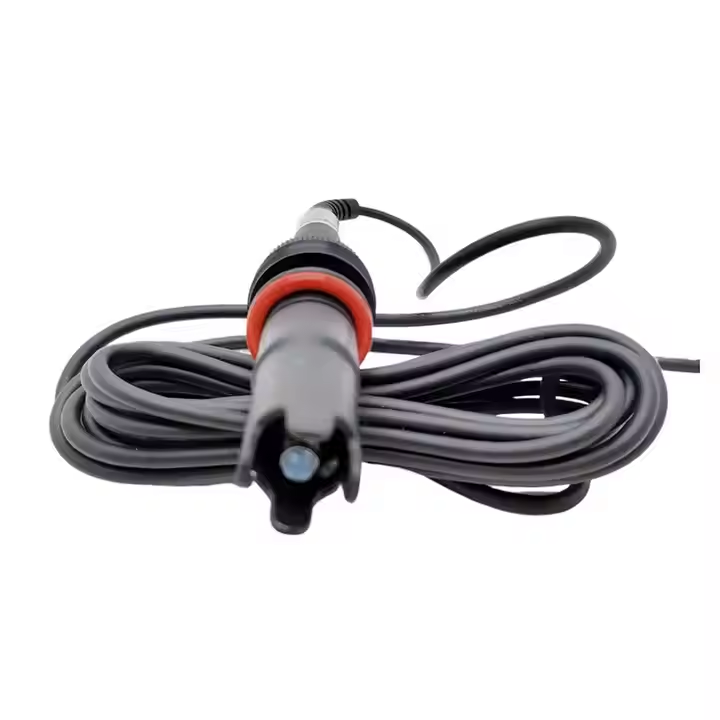Hannergrond vun der Waasserqualitéitskontroll an de Bedierfnesser fir Chlorkontroll a Vietnam
Als séier industrialiséierend a urbaniséierend Südostasiatescht Land steet Vietnam virun duebelem Drock am Waasserressourcemanagement. Statistike weisen datt ongeféier 60% vum Grondwaasser a 40% vum Uewerflächewaasser a Vietnam a verschiddenem Mooss kontaminéiert ass, mat mikrobiellen a chemesche Verschmotzungen als Haaptproblem. A Waasserversuergungssystemer spillt Reschtchlor - als de verbleiwenen aktiven Chlorkomponent vun der Desinfektioun - eng entscheedend Roll fir d'Waassersécherheet ze garantéieren. Net genuch Reschtchlor kann Pathogenen a Pipelinen net kontinuéierlech eliminéieren, während exzessiv Niveauen karzinogen Desinfektiounsnebenprodukter produzéiere kënnen. D'WHO recommandéiert d'Reschtchlorkonzentratioun tëscht 0,2-0,5 mg/L am Drénkwaasser ze halen, während de QCVN 01:2009/BYT Standard vu Vietnam mindestens 0,3 mg/L op den Endpunkte vun de Pipelinen verlaangt.
D'Waasserinfrastruktur a Vietnam weist bedeitend Ongläichheeten tëscht Stied a Land op. Stied wéi Hanoi an Ho Chi Minh City hunn relativ komplett Versuergungssystemer, awer si stinn virun Erausfuerderungen duerch alternd Pipelinen a sekundär Kontaminatioun. Ongeféier 25% vun der ländlecher Bevëlkerung hunn nach ëmmer keen Zougang zu sécherem Drénkwaasser a si si haaptsächlech op inadequater gekläert Buer- oder Uewerflächewaasser ugewisen. Dës ongläichméisseg Entwécklung stellt ënnerschiddlech Ufuerderungen un Technologien fir d'Iwwerwaachung vu Chlor an - Stied brauchen héichpräzis Echtzäit-Online-Systemer, während ländlech Regiounen Käschteeffizienz a Betribsfrëndlechkeet prioritär behandelen.
Traditionell Iwwerwaachungsmethoden stoussen a Vietnam op verschidde Ëmsetzungshindernisser:
- Laboranalysen erfuerderen 4-6 Stonnen duerch trainéiert Personal
- Manuell Proufnahme ass duerch déi verlängert Geographie a komplex Flosssystemer vu Vietnam limitéiert.
- Ofgetrennt Daten liwweren keng kontinuéierlech Ablécker fir Prozessanpassungen
Dës Aschränkunge goufen besonnesch däitlech a Noutsituatiounen, wéi dem Chlorleck am Joer 2023 an engem Industriepark an der Provënz Dong Nai.
D'Technologie fir Restchlor-Sensoren bitt nei Léisunge fir d'Waasseriwwerwaachung a Vietnam. Modern Sensoren benotzen haaptsächlech elektrochemesch Prinzipien (Polarographie, Konstantspannung) oder optesch Prinzipien (DPD-Kolorimetrie), fir fräien a gesamten Chlor direkt ze moossen, andeems se Echtzäitdaten iwwer kabelgebonnen oder drahtlos Verbindungen iwwerdroen. Am Verglach mat traditionelle Methoden bitt dës Technologie eng méi séier Reaktiounszäit (<30 Sekonnen), eng méi héich Genauegkeet (±0,02 mg/L) a manner Ënnerhalt - besonnesch gëeegent fir de tropesche Klima a fir d'dezentraliséiert Iwwerwaachungsbedürfnisser a Vietnam.
D'Initiativen "Smart City" a Vietnam an dat nationalt Programm "Clean Water" bidden politesch Ënnerstëtzung fir d'Adoptioun vu Chlorsensoren. 2024Vietnam Reschtchloranalysator Industrieentwécklungs- a Investitiounsfuerschungsberichtweist op Pläng vun der Regierung hin, d'Iwwerwaachungssystemer a Groussstied ze moderniséieren, mat Prioritéit op Online-Chlor-Iwwerwaachungsausrüstung. Gläichzäiteg huet de Gesondheetsministère d'Iwwerwaachungsfrequenz vu monatlech op deeglech op kritesche Punkten erhéicht, wat d'Nofro no Echtzäit-Technologien weider erhéicht.
Tabelle: Reschtchlorgrenzen an de Waasserqualitéitsnormen a Vietnam
| Waassertyp | Standard | Chlorgrenz (mg/L) | Iwwerwaachungsfrequenz |
|---|---|---|---|
| Gemengen Drénkwaasser | QCVN 01:2009/BYT | ≥0,3 (Endpunkt) | Deeglech (kritesch Punkten) |
| Fläschewaasser | QCVN 6-1:2010/BYT | ≤0,3 | Pro Charge |
| Schwammbecken | QCVN 02:2009/BYT | 1.0-3.0 | All 2 Stonnen |
| Spidol Ofwaasser | QCVN 28:2010/BTNMT | ≤1.0 | Kontinuéierlech |
| Industriell Ofkillung | Industriestandarden | 0,5-2,0 | Prozessofhängeg |
De vietnamesesche Sensormaart weist eng international-lokal Koexistenz op, mat Premiummarken wéi dem däitsche LAR an dem amerikanesche HACH, déi d'Héichwäertssegmenter dominéieren, während chinesesch Hiersteller wéi Xi'an Yinrun (ERUN) a Shenzhen AMT Maartundeeler duerch kompetitiv Präisser gewannen. Besonnesch vietnamesesch Firmen trieden duerch Technologiepartnerschaften an d'Sensorproduktioun an, wéi zum Beispill d'Bëlleg-Sensore vun enger Firma mat Sëtz zu Hanoi, déi erfollegräich a Waasserprojeten a ländleche Schoule getest goufen.
Lokal Adoptioun steet virun e puer Adaptatiouns-Erausfuerderungen:
- Tropesch Fiichtegkeet beaflosst Elektronik
- Héich Trübung beaflosst d'optesch Genauegkeet
- Onregelméisseg Stroumversuergung a ländleche Gebidder
D'Produzenten hunn mat IP68-Schutz, automatescher Reinigung an Optioune fir Solarenergie reagéiert, fir d'Zouverlässegkeet an den usprochsvollen Bedéngungen a Vietnam ze verbesseren.
Technesch Prinzipien a vietnamspezifesch Adaptatiounen
Reschtchlorsensore benotzen a Vietnam dräi primär Detektiounsmethoden, déi all fir verschidden Ëmfeld an Uwendungen gëeegent sinn.
Polarographesch Sensoren, zum Beispill duerch den ERUN-SZ1S-A-K6, dominéieren kommunal an industriell Installatiounen. Dës moossen de Stroumënnerscheed tëscht Aarbechts- an Referenzelektroden (typesch Goldelektrodesystemer) a bidden eng héich Präzisioun (±1%FS) a séier Reaktiounszäit (<30s). Am Waasserwierk Nr. 3 vun Ho Chi Minh City hunn d'polarographesch Resultater eng Konsistenz vu 98% mat den DPD-Labornormen gewisen. Integréiert automatesch Botzmechanismen (Bürstesystemer) verlängeren d'Ënnerhaltsintervaller op 2-3 Méint - entscheedend fir d'algenräich Gewässer a Vietnam.
Konstantspannungssensoren (z.B. LAR-Systemer) exceléieren a komplexen Ofwaasserapplikatiounen. Andeems se e fixe Potenzial uwenden an de resultéierende Stroum moossen, weisen se eng iwwerleeën Stéierungsbeständegkeet géint Sulfiden a Mangan op - besonnesch wäertvoll am organesche-schwéiere Gewässer am Süde vu Vietnam. D'industriell Ofwaasseranlag Can Tho AKIZ benotzt dës Technologie zesumme mat NitriTox-Systemer, fir den Ofwaasserchlorgehalt op 0,5-1,0 mg/L ze halen.
Optesch kolorimetresch Sensoren wéi de Blueview ZS4 erfëllen budgetbewosst Multiparameterbedürfnisser. Och wann se méi lues sinn (2-5 Minutten), reduzéiert hir DPD-baséiert Multiparameterkapazitéit (gläichzäiteg pH/Trübung) d'Käschte fir regional Versuergungsbetriber. Fortschrëtter am Beräich vun der Mikrofluidik hunn de Reagenzverbrauch ëm 90% reduzéiert, wat d'Ënnerhaltsbelaaschtung erliichtert huet.
Mir kënnen och eng Villfalt vu Léisunge fir
1. Handmiessapparat fir Waasserqualitéit mat verschiddene Parameteren
2. Schwemmend Bojesystem fir Waasserqualitéit mat verschiddene Parameteren
3. Automatesch Reinigungsbürste fir de Waassersensor mat verschiddene Parameteren
4. Komplett Set vu Serveren a Software-WLAN-Modul, ënnerstëtzt RS485 GPRS /4g/WIFI/LORA/LORAWAN
Kontaktéiert w.e.g. Honde Technology Co., LTD.
Email: info@hondetech.com
Websäit vun der Firma:www.hondetechco.com
Tel.: +86-15210548582
Zäitpunkt vun der Verëffentlechung: 24. Juni 2025


